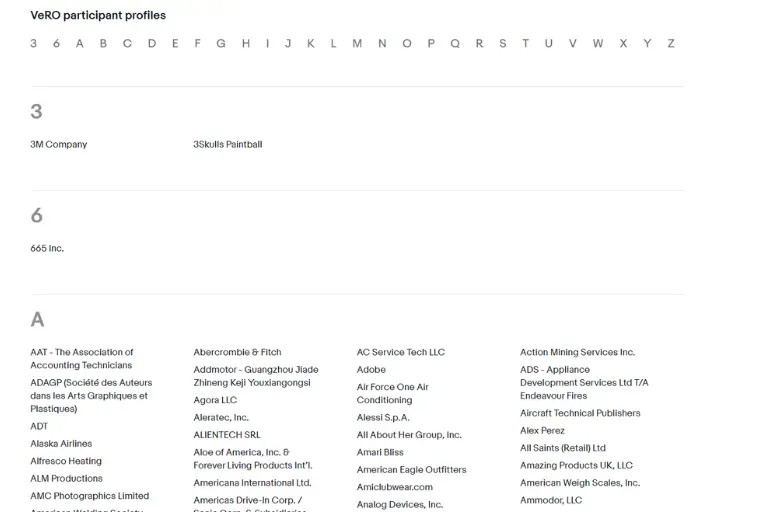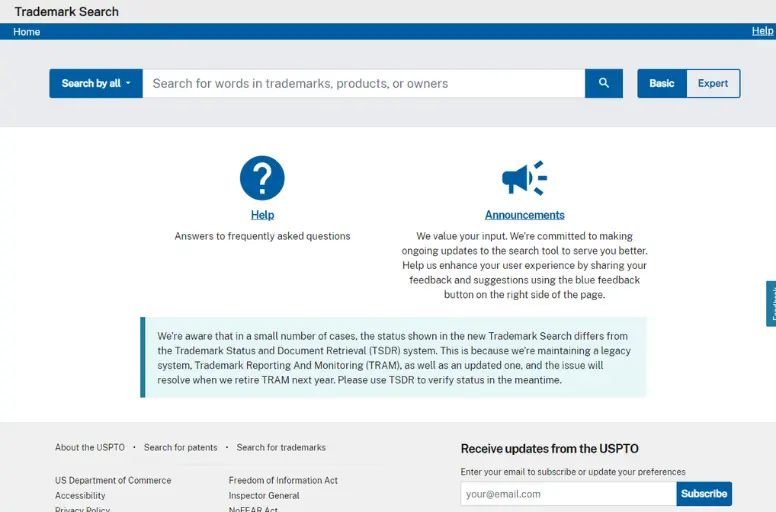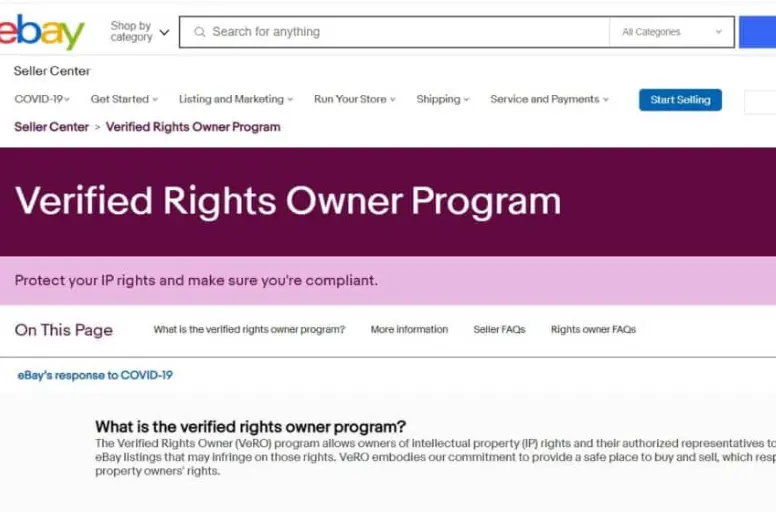With 129 million active users in 2023, eBay is one of the best eCommerce platforms globally. Given the vast number of items for sale, intellectual property ownership becomes a concern for eBay. And, as a method of eBay seller protection, the eBay VeRO program exists
So, what does a vero mean on eBay? VeRo meaning refers to the Verified Rights Owner. This intellectual program allows property owners to report listings that infringe upon their rights. It protects the intellectual property rights of third parties and provides a safe trading environment for eBay members.
In this article, we will provide information from A to Z about the eBay VeRo program. In the end, you can apply it to your eBay business. Our article will walk through:
- How does the eBay VeRO program work?
- What are the reasons for VeRO infringements?
- How to avoid VeRO on eBay?
Don’t Skip the Ultimate eBay Selling Guide
If you are new to eBay, don’t miss out on our updated eBay selling guide for beginners. It’s already live on our Retailer Blog!
How Does the eBay VeRO Program Work?
In the introductory phase, we explained what is ebay Vero. Nonetheless, in order to provide a more comprehensive understanding of this program, we will now explore the operation of eBay Vero.
To handle the process of how to join eBay vero program, firstly, you need to be an intellectual property rights owner or their authorized representative. Under the eBay VeRO Program, intellectual property (IP) rights owners can report eBay listings that they believe infringe on their rights. To initiate a report, the owner of IP rights can choose to:
- File a Notice of Claimed Infringement (NOCI) on eBay’s website
- Submit their request via email or fax.
In addition, the eBay vero form must:
- Be signed by an authorized representative of the rights owner
- Provide a comprehensive description of the copyrighted work or item.
If a listing is reported, eBay will review the report and take appropriate action, including removing the listing. When a listing is removed based on a VeRO report, eBay will email the seller with details about why the listing was reported and how to contact the rights owner.
eBay’s attempts to protect its seller community include the VeRO program and the right to block a buyer if shopping regulations are violated. Check more on how to block a buyer on eBay!
What are the Reasons for VeRO Infringements?
There are many causes leading to eBay VeRO program infringements. Among them, the most prominent include:
- Violation of trademark rights
- Infringement of copyright
- Counterfeit goods
- Concerns regarding brand names
- Improper use of logos
Let’s check deeply each cause with us!
#1. Violation of trademark rights

One of the primary reasons for VeRo unauthorized listing policy infringements is the violation of trademark rights. Trademarks are essential for businesses to differentiate their products or services from competitors. However, unauthorized use of trademarks can lead to consumer confusion and damage the brand’s reputation. eBay VeRO is particularly stringent in addressing trademark infringements, as these violations can have severe implications for businesses.
Infringing on these rights manifests in various ways:
- Mislabeled/unauthorized merchandise: Sellers might list genuine items but use unauthorized logos, brand names, or descriptions in their listings to attract buyers. This confuses consumers and potentially infringes on trademark rights.
- Using trademarks in custom designs: Creating and selling items featuring protected trademarks without permission, like custom phone cases or T-shirts, can be considered infringement.
- Parallel imports: Sometimes, selling authentic goods imported from foreign markets without the brand owner’s consent can be a trademark violation, depending on specific regional trademark rights.
#2. Infringement of copyright
Copyright infringement is another significant reason for eBay VeRO policy violations. Copyright protects original creative works such as literature, music, art, and software. Common VeRO infringements in this arena include:
- Direct product replication: Replicating copyrighted designs, patterns, or artwork on products like clothing or phone cases falls under copyright infringement. Imagine selling t-shirts emblazoned with Disney characters you didn’t create; this is a case of direct product replication.
- Unauthorized distribution: Uploading and selling copyrighted material like ebooks or music without permission from the rights holder is a clear violation. This applies even if the material is freely available online, as legal distribution channels must be respected.
- Derivative works without consent: Some creative reinterpretation of copyrighted works might be fair use. However, blatantly copying or modifying them without permission can trigger a VeRO takedown.
#3. Sale of counterfeit goods

Counterfeit goods are unauthorized replicas of genuine products, often of inferior quality, and can unknowingly deceive consumers into purchasing counterfeit items. These goods significantly threaten:
- The economy
- Brand reputation
- Consumer safety
If you sell counterfeit goods, you are violating the eBay Vero program. You can face severe consequences for:
- Selling fake merchandise: Offering counterfeit versions of established brands, from watches to electronics, is a blatant eBay vero program violation.
- Passing off replicas as genuine: Intentionally misleading buyers by presenting replicas as authentic branded products is a serious offense.
- Facilitating counterfeit trade: Providing platforms or channels for others to sell counterfeit goods can also lead to VeRO action. Remember, even unknowingly facilitating such activity puts you at risk.
#4. Concerns regarding brand names
eBay VeRo program also addresses concerns related to brand names as unauthorized use of a brand’s name can:
- Mislead consumers
- Dilute the brand’s value
- Create a false association with the brand
Such unauthorized use of the brand name can occur when:
- Deceptive name mimicry: Choosing a product name that closely resembles a registered brand name, even with slight variations, can be misleading and trigger infringement claims.
- Using a brand name in titles and descriptions: Sellers might directly mention a famous brand in their listing titles or descriptions, even if the product isn’t from that brand. For example, a seller might list a generic phone case as “Compatible with iPhone 14 Pro Max Case” without mentioning the case brand. This practice can confuse buyers into thinking they’re purchasing an official branded product.
#5. Improper use of logos

Logos are visual representations of a brand and play a crucial role in brand recognition. Unauthorized use of logos, whether in product listings or promotional materials, can mislead consumers and infringe upon the rights of the logo’s owner. eBay VeRO actively targets listings that improperly use logos without permission. By removing such listings, the program aims to maintain the integrity of logos and prevent misleading practices.
Improper use of logos can occur if:
- Misrepresentation of affiliation: Sellers use logos of well-known companies or organizations to imply an endorsement or partnership they don’t have. This can mislead buyers into thinking the product is officially associated with the brand.
- Logo dilution: Sellers use slightly modified logos to weaken the original trademark’s distinctiveness and value. This can be particularly harmful for established brands.
Ready to Let Your Brand Go Live on eBay?
Apart from eBay VeRO, the marketplace has attempted many other plans to protect sellers and their brands. Is that convincing for you to publish a brand on this channel?
How to Avoid VeRO on eBay? 5 Practical Tips
You know, violating eBay VeRO eBay program can result in severe consequences such as account suspension or legal action. So, in this section, we will provide you with five practical tips to avoid eBay VeRO policy, including:
- Check the eBay VeRO listing
- Avoid selling counterfeit or replica goods
- Research trademarks and copyrights
- Make legally compliant listings
- Respond promptly to VeRo notifications
#1. Check the eBay VeRO list

eBay maintains a comprehensive list of eBay vero participants, readily available online. Before listing any product on eBay, it would be better to check this list. By doing that, you can ensure you are not inadvertently selling products that may violate intellectual property rights.
To check the eBay VeRO list, you can follow these steps:
- Visit the eBay website.
- Look for the VeRO Participant Profiles tab on the website.
- Click on the tab to access the list of brands that cannot be sold on eBay. The list will provide an alphabetical order of brands in the VeRO program.
- Click on the name of a brand to view more information about it
Moreover, there’re several eBay vero list checker tools available, including browser extensions and software. Some tools you can refer to are:
- PriceYak’s eBay VeRO tool: PriceYak offers a free VeRO tool that analyzes your eBay listings for potential VeRO risks and provides a report delivered to your inbox within a few hours. It has an extensive VeRO list in the dropshipping universe.
- VeRo Checker Private: This Chrome extension helps sellers identify Vero brands on eBay. It allows you to check for brands participating in the eBay VeRO program and report any new additions from your experience.
- eBay VeRO List Checker: This eBay vero checker allows you to check if a product you want to list is on the eBay VeRO list. It provides comprehensive VeRo items on eBay list and helps you avoid listing products that may violate copyright or trademark laws
#2. Avoid selling counterfeit or replica goods
As we mentioned above, one of the most common reasons for violations of the eBay Vero program is selling counterfeit or replica goods. To avoid selling counterfeit or replica goods, you should:
- Choose reputable suppliers: Build relationships with trusted suppliers with a proven track record of selling authentic goods. You should also look for certifications or licenses demonstrating their commitment to ethical sourcing and quality control.
- Verify authenticity: Don’t just take a supplier’s word for it. You need to request proof of authenticity, such as invoices, receipts, or authorization letters from the brand owner. Be wary of deals that seem too good to be true.
#3. Research trademarks and copyrights

To avoid eBay VeRO program violations, you should familiarize yourself with trademarks and copyrights related to the products you intend to sell. Researching trademarks and copyright will help sellers identify any potential conflicts or infringement issues.
Here are some sources you can use to research trademark databases:
- Official Trademark Databases:
- United States Patent and Trademark Office (USPTO): Provides comprehensive information on registered trademarks in the US
- World Intellectual Property Organization (WIPO): Searches trademarks in multiple countries
- EUIPO: Searches trademarks in European Union countries
- Brand websites: Many brands maintain dedicated pages displaying their registered trademarks and logos on their websites.
- Professional services: Trademark attorneys can conduct comprehensive searches and provide legal advice.
Moreover, in case you need to learn about copyright, it is advised to refer to:
- US Copyright Office: Search the Copyright Office’s online database for registered works:
- Library of Congress: The Library of Congress maintains a vast collection of copyrighted materials, including books, films, and music.
- Creative industry websites: Many creative industries, like the Writers Guild of America, have copyright databases or resources specific to their field.
- Copyright Registries in other countries: If you’re dealing with international copyrights, explore the copyright registries of the relevant countries.
#4. Make legally compliant listings
Creating legally compliant listings is crucial in avoiding VeRO on eBay. You must accurately describe their products without misrepresenting or infringing on any intellectual property rights through actions such as:
- Use original product images and descriptions.
- Avoid the use of copyrighted material without permission
- Refrain from using misleading keywords or phrases that may mislead buyers or infringe on the rights of others.
- Maintain a record of your listings, including descriptions, images, and purchase documentation. This can be helpful if you need to defend yourself against claims of inaccuracy or infringement.
#5. Respond promptly to VeRo notifications

In the event of receiving a VeRO notification from eBay, we highly recommend you respond promptly and take appropriate action. Ignoring or delaying responses can result in account suspension or further legal consequences. You should:
- Carefully review the notification
- Assess the alleged infringement
- Contact the rights owner to resolve the matter
- Seek legal advice if necessary.
By responding promptly and professionally, you can minimize the impact of VeRO notifications on their eBay business.
You may also like: eBay Selling Taxes: A Complete Guide to Master All Taxation Practices [2026 Updated].
eBay VeRO Program Explained in Detail: FAQ
To deal with eBay VeRo program, here are some steps you can take: If you receive a VeRO notice on eBay, it means that one of the products in your listings has been removed due to intellectual property infringement. eBay will send you an email explaining why the product was removed and provide you with the contact information of the rights owner. If you continue to violate the VeRo unauthorized listing policy, eBay may temporarily suspend or permanently block your account. Whether or not eBay refunds your fees depends on the policy you violated and your past violation history. To file a VeRO (Verified Rights Owner) report on eBay, follow these steps: It’s worth mentioning that if you’re wondering how to register for eBay Vero program, the steps outlined above provide the solution to that inquiry as well.
Be Cautions with eBay VeRO Policy
As a seller, ensuring that your listings comply with the eBay VeRo program to avoid potential infringement claims is crucial. By following our above guide, you can navigate the eBay platform confidently and responsibly, ensuring a smooth and successful selling experience.
On another note, let’s explore LitCommerce – a fantastic tool for your business on this platform. To learn more, get in touch with us right away.
Lastly, don’t forget to stay connected with our blog to receive and exchange incredible eCommerce business tips daily.




